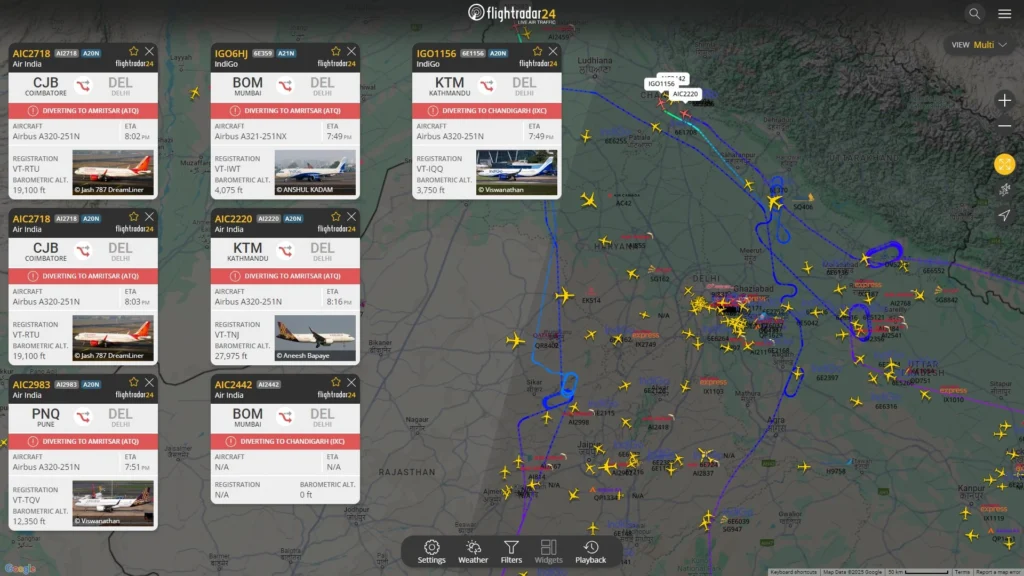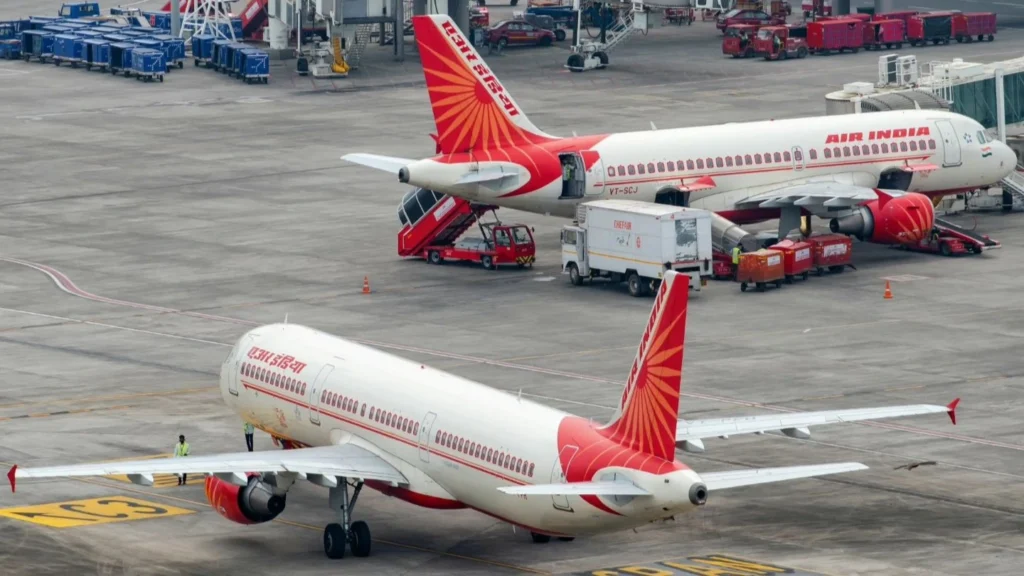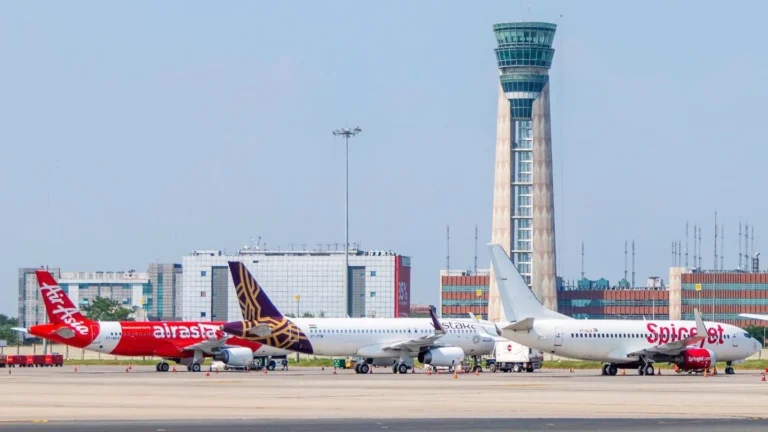NEW DELHI- Indira Gandhi International Airport (DEL) in Delhi experienced severe operational disruptions on Saturday, April 12, with nearly 500 flights delayed and over 40 diverted.
The chaos resulted from a combination of Friday evening’s powerful thunderstorm and the ongoing closure of Runway 28/10 for maintenance work.

Delhi Airport Storm Affects Flights
According to Flightradar24 tracking data, at least 498 flights faced delays by 7:20 PM on Saturday. Airport officials confirmed that more than 40 flights had been diverted since Friday evening, with delays affecting over 300 flights.
The airport has been operating with reduced capacity since April 9 due to the planned closure of Runway 28/10 for an Instrument Landing System (ILS) upgrade. This maintenance, announced in February, aims to improve flight operations during Delhi’s low-visibility winter fog conditions.
The timing of the thunderstorm created a major storm of challenges, revealing apparent gaps in contingency planning for operating with limited runway capacity during adverse weather events.
Social media platforms were filled with complaints from stranded passengers experiencing extended delays, poor communication, and inadequate support.
“20 min dust storm in Delhi; there’s chaos everywhere. Because the airlines don’t have a system of contingency planning… zero support, communication, basic facilities, nothing… It took 15 hours to retrieve my baggage,” one passenger posted.
Another traveler complained to Air India (AI): “…flight departed 12 hours late. There was no support from your side at Delhi Airport, all your higher authority was sleeping peacefully when we were suffering. The delay was due to total mismanagement of Air India.”
Widespread Disruption
The thunderstorm that hit Delhi and the National Capital Region (NCR) on Friday brought gusty winds exceeding 80 km/hr, causing widespread damage. The India Meteorological Department (IMD) initially issued a yellow alert for Saturday, predicting additional storms, but later withdrew it.
Delhi International Airport Limited (DIAL) addressed the situation on social media at 5 PM Saturday.
“Flight operations at Delhi Airport are normal, but some airlines are still affected by last night’s weather conditions. Our teams are working hard to minimise inconvenience.”
Delhi International Airport Limited (DIAL)
Experts Question Management
Aviation specialists criticized airlines for failing to adjust their schedules to accommodate the known runway closure.
Captain Mohan Ranganathan noted, “The airlines should have ideally planned a reduced number of flight operations per day when they were informed about the unavailability of one of the major runways. However, doing so would affect their revenue. Sadly, they prefer their convenience over passenger convenience.”
Mark D Martin of Martin Consulting pointed out that Delhi Airport (DEL) should have been minimally affected by one runway closure, given that three others remained operational.
“The airlines seem to have not planned for the runway unavailability well.”
Mark D Martin, Martin Consulting
Factors Behind Extended Delays
A former airport official explained that the specific location of the closed runway contributed to operational inefficiencies. “Runway 29/10 is geographically located in the middle of the airfield, which increases the time taken for aircraft to taxi. This leads to cascading delays.”
The official described a domino effect: “If an arriving aircraft lands on a runway farther from the terminal than the one currently closed, the taxi time increases. Consequently, passenger disembarkation is delayed, cleaning staff boards the aircraft later than scheduled, and the boarding of passengers for the next sector is also delayed.”

Airlines Respond to Crisis
Despite claims from airlines that they were coordinating with airport operators, the Airports Authority of India (AAI), and weather services, no carrier announced planned flight cancellations. This suggests that airlines attempted to maintain full schedules despite the challenging circumstances.
An airline representative, speaking anonymously, stated that carriers were collectively working to minimize passenger inconvenience through “real-time monitoring of flights, coordinating with stakeholders and keeping the passengers updated.”
Another official noted that Air India (AI) flights were particularly affected Saturday morning, with airport congestion continuing from Friday evening’s disruptions. Operations reportedly began normalizing after 10 AM.
Bottom Line
The situation highlights the vulnerability of India’s busiest air terminal to cascading delays when facing multiple simultaneous challenges, raising questions about contingency planning and passenger communication protocols during such events.
The Delhi airport crisis shows how poor planning caused widespread travel problems. Despite knowing about the runway closure in advance, airlines failed to reduce flight schedules, leading to nearly 500 delays and 40+ diversions when the storm hit.
The airport’s layout made problems worse as aircraft had to taxi longer distances. Passengers suffered the most—facing 12-hour delays, lost baggage, and almost no communication or support.
For India’s busiest airport, better coordination between airlines and airport authorities is needed to prevent similar breakdowns during predictable disruptions.
Stay tuned with us. Further, follow us on social media for the latest updates.
Join us on Telegram Group for the Latest Aviation Updates. Subsequently, follow us on Google News

